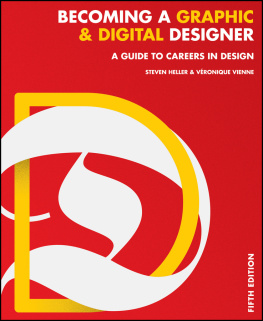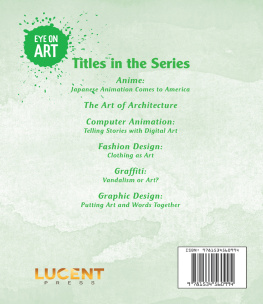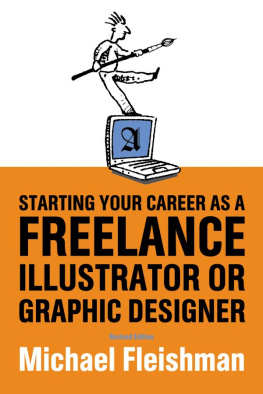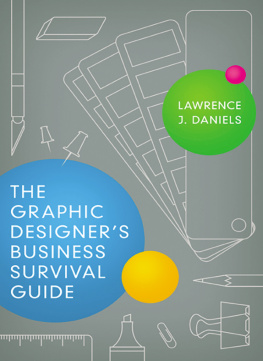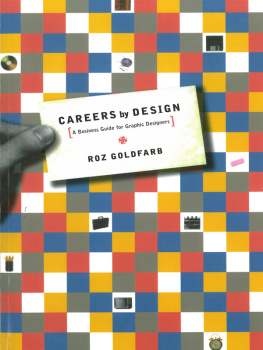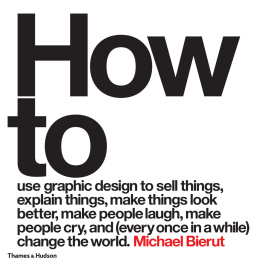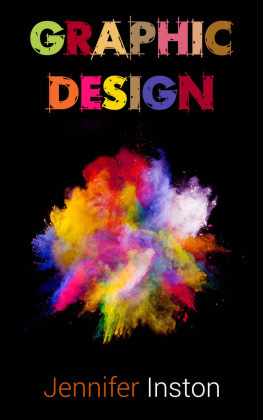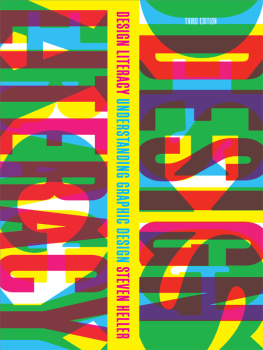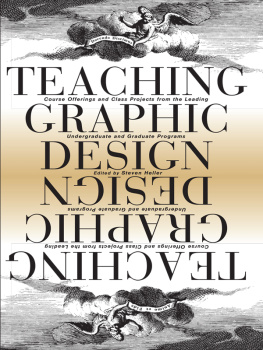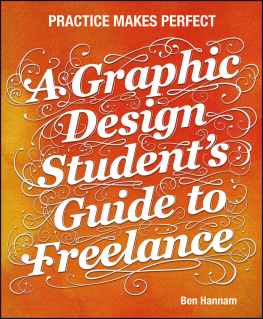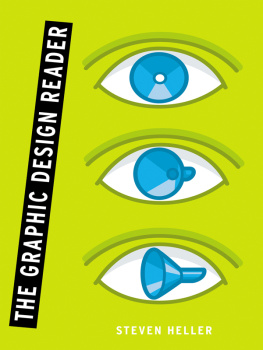
Part 1
Graphic Design
What is graphic design? That question has vexed most practitioners who were compelled to answer when a parent asked, What is it you do again? Graphic design was once enigmatica specialized field that was visible and yet a mystery. Then the computer revolution of the late 1980s brought enlightenment. Apple Computer ran a TV commercial showing a pair of hands doing a pasteup. To paraphrase the voice-over: This is what a graphic designer does. With the Apple you no longer need a graphic designer. With one 30-second spot, the world was introduced to graphic design and told it was obsoleteanyone with a Macintosh could do it. That was the age of desktop publishing, a moment in time when it seemed that graphic design was about to be devalued. But clear heads and machines prevailed. Instead of taking over the field, the Mac became its foremost tool. What's more, graphic designers became culturally significant as communicators, aestheticists, stylists, and even authors.
The world became aware that all those beautiful (and not-so-beautiful) books, book covers, posters, magazines, record covers, typefaces, signs, packages, exhibitions, trademarks, and information graphics were all components under the graphic design umbrella. Graphic design is not just about making pasteups and mechanicals or the equivalent on computer using InDesign; it is about conceptualizing, conceiving, imagining, constructing, producing, managing, and realizing an aesthetically determined functional piece of visual communication. Once it was primarily paper; now graphic design affects screens of all kinds. But the fundamental definition of graphic design as a way of organizing, formatizing, and functionalizing word and image remains constant.
Graphic designers all speak the same basic language (and use the same jargon), but graphic design is not an intuitive endeavor: Some designers are more adept at fine typography than others, who may be better skilled at sequential narratives or information management. It cannot be done without knowledge of the task, genre, or medium in question. Graphic design must be studied, learned, and continually practiced to achieve even basic proficiency. To go further, to transcend simple service and craft with inspiring work, graphic design must be totally embracedbody and soul.
This section offers a brief survey of some of the current design specialties and hybrids. Some of the viable opportunities discussed in the previous edition have disappeared or are now marginalized. Print work is increasingly being integrated with digital (online or handheld). The following interviews provide insight into and wisdom about the overall graphic design experiencehow people became designers and how their careers evolvedwith emphasis on each designer's unique specialties.
Part 2
Design Genres
Editorial design is not the same as advertising; advertising is not the same as book design. Each has a unique focus and target. In most cases, the tools are similar but the methodologies are not. Many graphic designers perform a broad range of tasks, switching media as clients and jobs demand. A designer cannot always afford to specialize because the volume of work in a specialty may not warrant it or competition may be too intense. Therefore, it is prudent at the outset of a career to learn about and practice all the disciplines that strike your interest and fancy as well as those that are growth areas for employment. Although it is not necessary to be expert in everything, it is useful to be fluent in as many forms as possible, at least while you are looking for your favorite genre.
Part 3
Transitional Design
The introduction of digital media was, for many graphic designers, a major disruption of geological proportions. While some reaffirmed their allegiance to printed matter, considering that the new technologies were nothing more than advanced production tools, others, driven by curiosity, chose the path of experimentation. But there were no signposts along the way. Words had to be crafted to describe choices and options. Transmedia projects. Creative ambidexterity. Data visualization. Integrated thinking. Experience Design. The new jargon did nothing to explain what was happening. The first graphic designers who ventured outside the boundaries of the known analog realm were speaking in tongues!
However, their work was quite sensational. If they had trouble naming what they did, the results spoke for themselves. Even though their practice was transitional (another word that doesn't say much), these designers won big awards, were invited to participate in juries, spoke at international conferences, made headlines, and had museum retrospectives.
Today, there is a new generation of graphic designers who haven't experienced this transitional phase firsthand but who have retained the multidisciplinary approach pioneered by their peers. One can count on them to usher in new ideas and unexpected practices. Most of them are self-taught and entrepreneurial in spirit. To join their ranks, graphic designers don't have to be fluent in programming codes or even technologically proficient, but they must be fast learners. Critical is an ability to hit the ground running and get up to speed in no time at all.
If you happen to be this type A individual, the number of opportunities for employment can be mind-boggling. You can join teams of Web designers who are exploring novel ways to navigate information and interact with it. You can find work in the field of motion graphics, where you will be prompted to develop your storytelling skills. You can he hired by advertising agencies to work, in their lab department, where researchers explore new media options and concoct alternative tactics for social networking marketing.
How do you break in? By having a passion and doing something about it, whether it is claymation or bookbinding, prototyping or broadcasting, information graphics or wayfinding. Develop projects that demonstrate how you approach the topic of your choice. Bring a product or a service of your own making to the market. Raise money for a venture with a crowd-funding campaign. Design an app. Initiate a cycle of conferences. Open a small gallery. Make mini-documentary films.
The measure of success in this space we call transitional design is not how things look but how things work.
Needless to say, no one aspires to job security in this career path! As the saying goes, The ink doesn't dry in the digital age. But, as confirmed by the next series of interviews, there is no shortage of successful people in this category. What these innovators have in common is a certain amount of charisma, not because of their personality, but because of their attitudea fearless disdain for preconceived ideas.
Part 4
Digital Design
In digital design, the word digital is vestigial. To be a communications designer these days implies working in digital space with digital formats. We've already examined the impact of digital tools on design practice, design thinking, and design production. Now we will survey the opportunities in the digital arena(s) and how others have mastered them. While a dwindling majority of graphic designers still describes their practice as problem solving, a growing number of new- comers have declared that instead of looking for solutions to problems, they are going to be designing programs for solutions.
Not a breakthrough idea, this concept was pioneered 50 years ago by Swiss typographer Karl Gerstner, who wrote Designing Programmes, a book about systems in graphic design. It features four illustrated essays on a systematic methodology that is particularly relevant today, in the context of the most recent developments in computational design.
Next page
